I should get more creative ... but it’s late
A similar headline as last week, as my week has been similar to last week: walk the halls of a big trade show and gather the highlights to bring to you, my reader who has too much real work to do to get away from the greenhouse. Or, if you did actually attend, maybe I spotted something you didn’t. It’s not likely, but you never know …
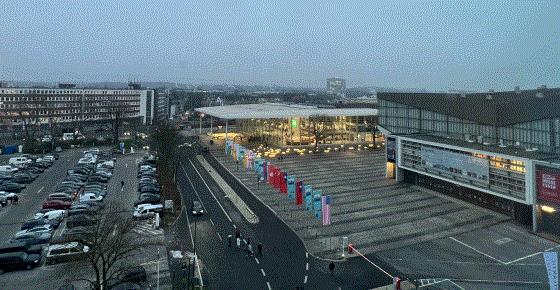
I am writing this from the Atlantic Congress Hotel, room 719, overlooking the Essen Messe (messe meaning convention center), home of IPM Essen, the undisputed king of the global horticulture trade shows. The show runs Tuesday through Friday; it’s now Thursday night and I’ve seen all I have the energy to see. The messe is eight large halls, with 1.2 million sq. ft. of exhibition space, all connected in a big flying-wing shape, so it’s easy to get lost. I long ago learned never to say, “I’ll stop by later” to an exhibitor willing to give me a scoop, because chances are I’ll never find their stand again (“stand” is Eurospeak for booth).
IPM has little to do with integrated pest management. It translates as “International Plant Fair,” and the exhibitors cover a broader range of categories than you’ll find at any other horticulture show. And it is as international as it gets, in both exhibitors and attendees. I have not seen or received any official figures, nor would I try to guess. Suffice it to say that there are more countries and companies and attendees here than you’ll see anywhere else.

The mood on the trade show floor
As with last week’s TPIE show in Tampa, Florida, I took every opportunity to ask about the mood. This is Europe, after all, where there’s a war, inflation, high labor costs, and natural gas prices that had soared to 10 times their normal price, which gave Europe something else to panic about heading into winter. But factors have turned in everyone’s favor. Governments rallied to provide financial aid. The weather has cooperated, too, with temperatures thus far running above normal. The war in Ukraine still has Russian natural gas supplies up in the air, so conditions are still uncertain, but there’s a light at the end of the tunnel, at least for this winter.
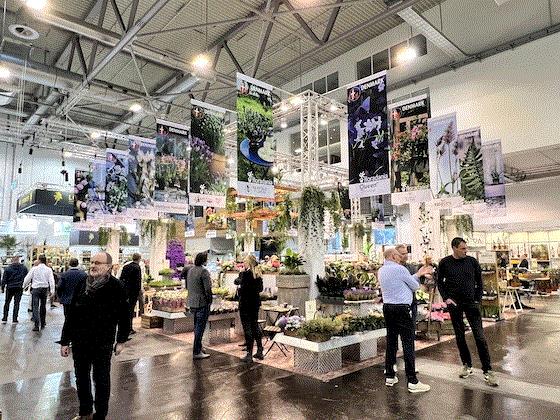
The Danish growers' stand. They used to occupy an entire hall; this year they scaled way back out of caution and conservatism. The plants were as fabulous as ever, however.
Talking to experts, the watchword is “careful.” After two good years (2020 and 2021), growers had a tough 2022. Going into this next season, growers are being careful with their orders, their production and their planning for spring. They’re growing fewer plants, and growing them a bit cooler or with less hours of supplemental lighting, all to save energy.
Talking about specific sectors, phalaenopsis orchids seems to have taken the biggest hit. One orchid breeder told me the orchid young plant market was down 50 million plants, due to growers cutting back or giving up the crop completely or selling their heating fuel contracts instead of selling orchids. Young plant producers had to lay off employees, reduce production, consolidate space to control costs and do more outsourcing of young plants.
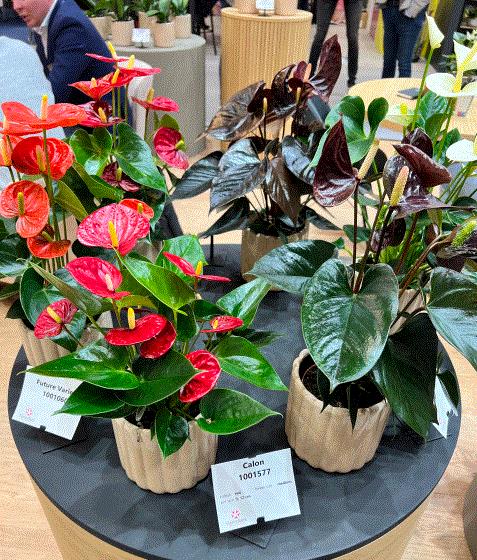
Orchid young plant producer Floricultura has diversified into anthuriums, having started their own breeding program about five years ago. These are some of their first offerings.
But all that said, growers and suppliers remain optimistic. The war seems to bother them more than inflation or energy costs or higher labor costs. Consumers have learned to handle all of that. The war in Ukraine is the one factor that can change for the better or worse at any moment. Plus, for many suppliers and growers, it cut off the major Russian plant market.
One Dutch grower told me he is looking for a good 2023 because all the consumers, pent up from the pandemic, finally went on holiday in 2022. And not just one—they took two or three! So maybe this year they’ll stay home and get back to gardening.

What should I share with my loyal readers?
This is the tough part. There is no bigger show to have to write about. So much I could say, but so little time. Products cover the gamut from Sri Lankan coconut fiber to garden center design firms. I ignore both of those and look primarily for plants, plant packaging ideas, greenhouse technology and anything that will make your life easier or more interesting. Let me sort through my notes and see what might be of interest to you:
“Three Sisters” combo planters
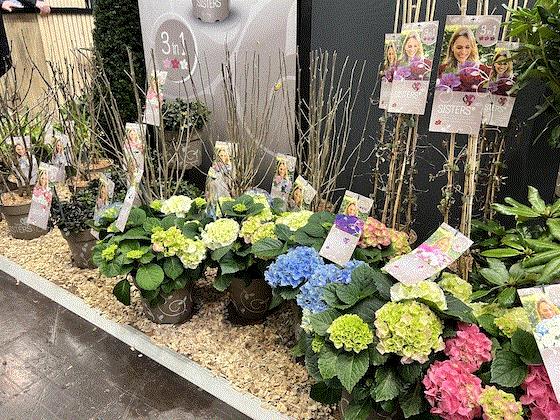
This shrub concept intrigued me. I couldn’t at first tell why it was called “Three Sisters.” Are they three different shrubs that go well together? Nope, turns out it’s three colors of the same shrub planted in one pot—think multi-color liners for shrubs. Produced by Heinje Baumschulen, a grower in northern Germany, the Three Sisters program currently offers agapanthus, lilac, azalea, hydrangea and clematis. It very much reminds of of O.F. Nelson’s multi-color bougainvillea from TPIE last week.
R-Trays
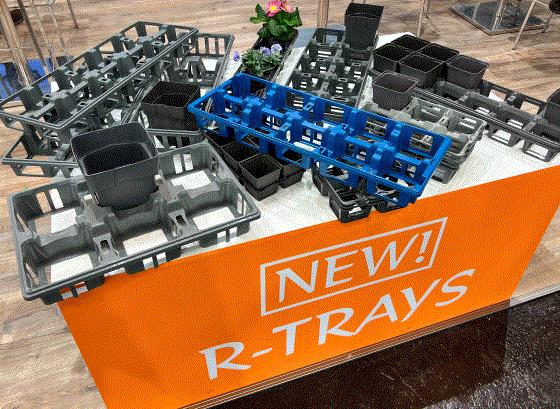
R means reuse and recycle for these new shuttle trays from Van Krimpen. The polypropylene plastic is recycled, and can be recycled. And it’s the same raw material as their pots, so they can all be recycled together. The skeleton design also uses less plastic. As you can see, multiple sizes are available.
Stairs
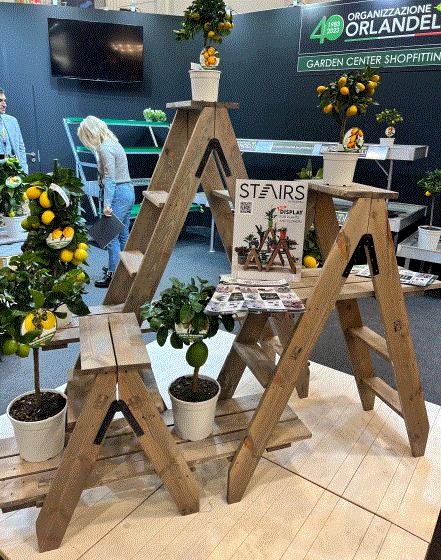
That’s what Italian garden center fixture company Orlandelli calls their new rustic display system, which looks just like stepladders. This is a just-launched prototype, but based on how often I see vintage ladders used for displays, I don’t see why it wouldn’t catch on—only, don’t try climbing them!
Nice succulents
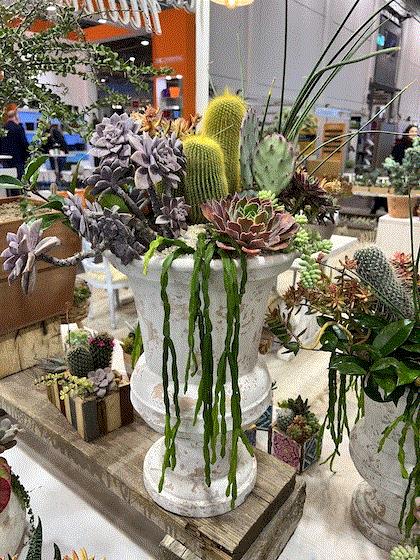
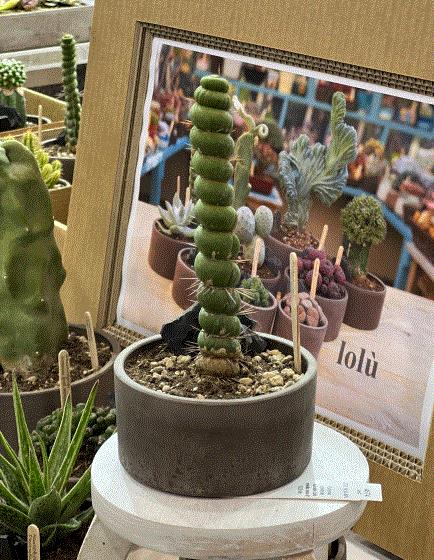
Succulents remain popular, and many stands displayed them. From the company Cactus Mania of Italy, a beautiful combo planter in an urn, and a very unusual spiraling cactus called Eulycnia castanea ‘spiralis’.
OldFruitTrees.com
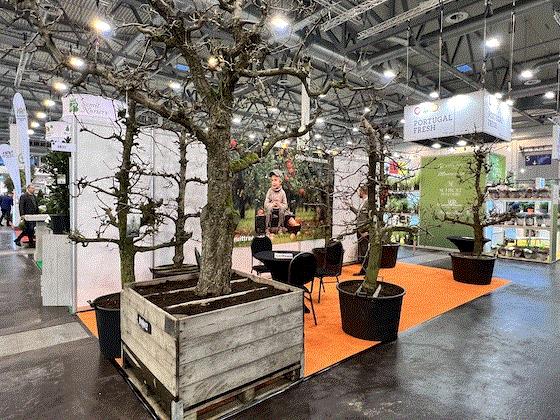
I always wondered how they dig up and save the ancient olive trees I see on display at IPM. In this case, nurserymen Gerrit Luiten (oldfruittrees.com) rescues apple and pear trees from orchards that are slated to be bulldozed for development. They sever the roots a year before they intend to dig the tree, to prepare it for the move. Some are young, maybe just 12 years old; they sell for $75. But the big pear you see here is about 60 years old, yet still costs just $495.
Five-star plant rating
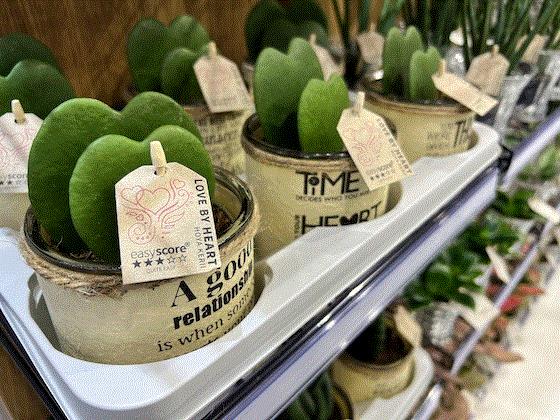
Easy Care, the plant brand from grower Feldborg in Denmark (which also has a farm in Thailand) now offers “Find Your Plant Care”—a simple star rating system to tell consumers if a plant is not easy (one star) to super easy (five stars) or something in between (like the three-star “quite easy” hoya above). Some varieties are peat-free (using coir instead); they’re working toward making their full line peat-free. The various wall and freestanding displays can be leased by retailers.
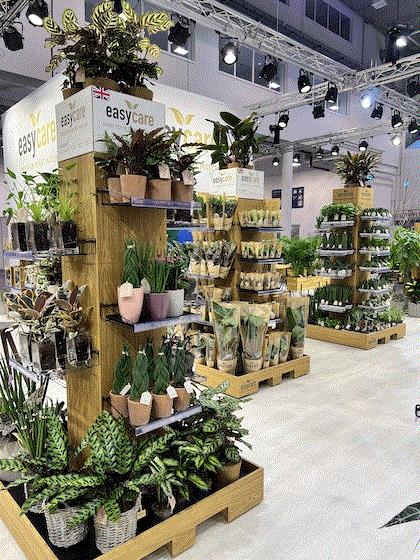
Tasty berry tags
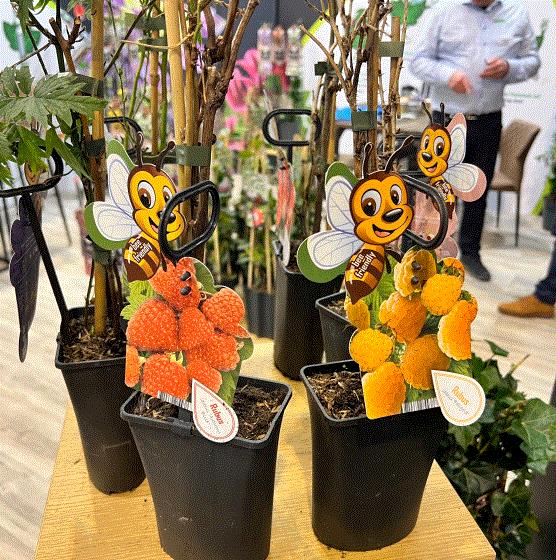
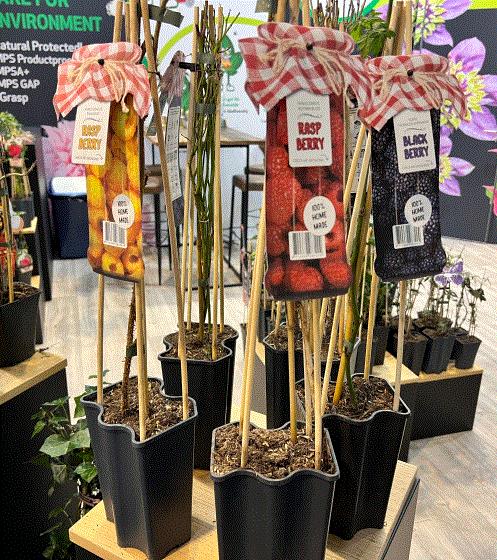
Here are some great tags for berries from Van Der Starre of Boskoop, in the Netherlands. One promotes that bees will enjoy them, too, and the other lets you know what you’ll be making at home once the plants bear fruit.

Sustainable packaging
Folks are always curious how they do sustainable packaging in Europe. Here are two examples:
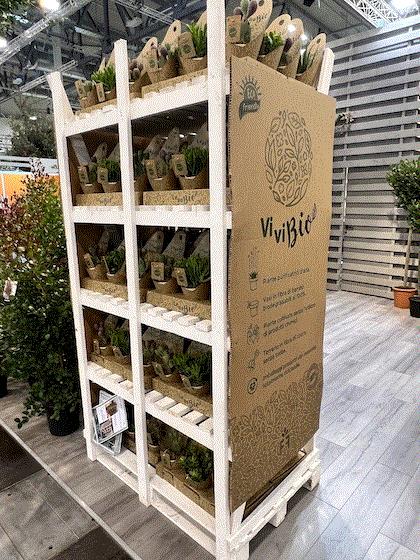
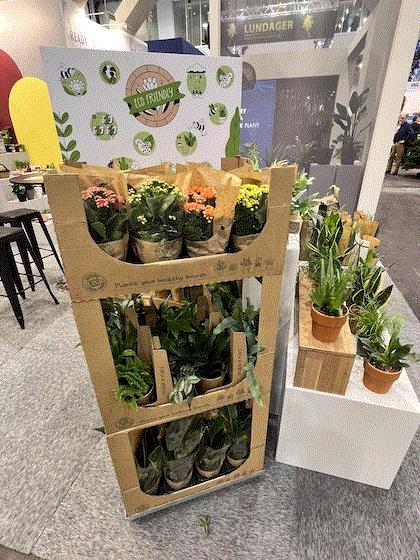
However, growers face the exact same challenge you do: Consumer say they want it, but they aren’t always willing to pay more for it. You see just as much plastic in a European garden center as you do in an American garden center.
When it comes to sustainability, though, it was evident, but not dominant. Plastic is widespread; they just do a good job making sure it’s recycled when possible, and able to fit into recycling programs. One strategy is to remove the carbon black coloration from pots, because black pots contaminate the waste stream.
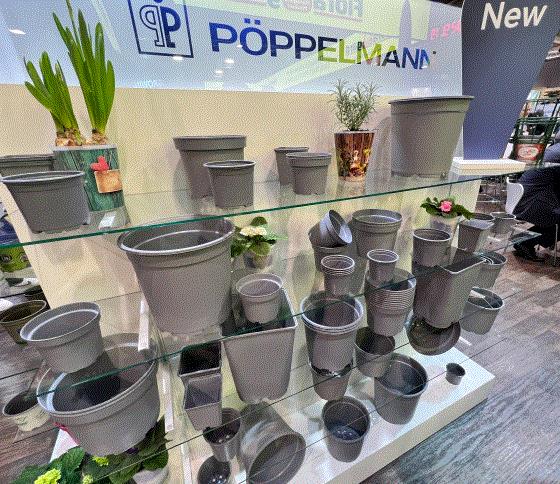
These new “Baseline” pots from Pöppelmann are made from post-consumer and post-industrial recycled plastic and have no black dye. I think the resulting gray is a more attractive pot anyway!
Waxed Hyacinths
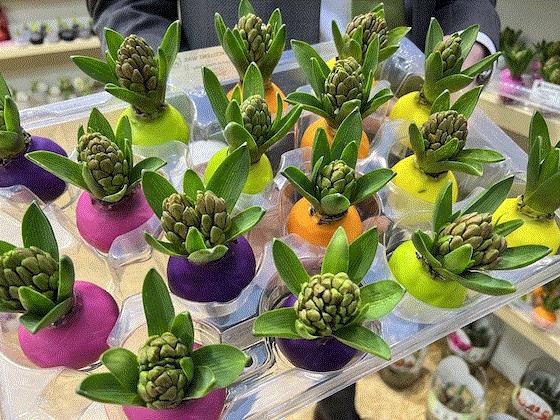
No doubt you’ve seen the wax-dipped amaryllis bulbs that need no pot or soil. Well, now you can get wax-dipped hyacinths, from Jansen’s Overseas. Sjoerd van der Krogt told me they are harder to produce than amaryllis, having to be dipped at just the right stage of bud for the bulb to bloom.
Super Women
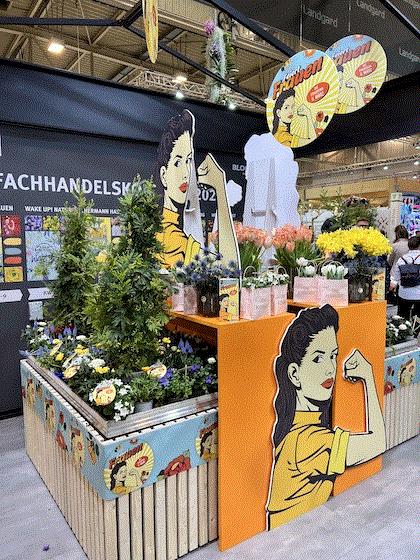
A holiday we don’t seem to celebrate in America—at least not as a floral holiday—is International Women’s Day, March 8. But Landgard, the German flower and plant auction, showed this powerful promotion, “Feiert Frauen”—“Celebrating Women”—they’ll be offering for Weeks 8 and 9, featuring tulips, campanula, ranunculus, saxifrage, rose and muscari.
Javo
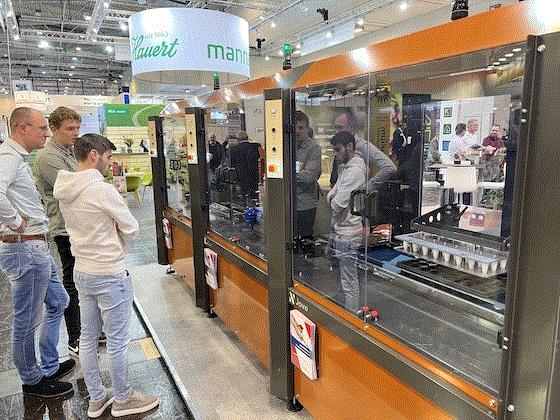
Safety is the name of the game with Javo’s new “Industrial Automation” production lines. Their goal: bring horticultural automation up to the safety standards of any factory or plant, complete with integrated communications between machine modules. The idea is to reduce the risk for injury when there is a malfunction or dangerous situation. These three modules include tray destacker, filler and dibbler; they are working on improving the safety of their carousel potting machines, too. This level of safety may not yet be mandated, but Javo wants you to be prepared.
Mini Jack
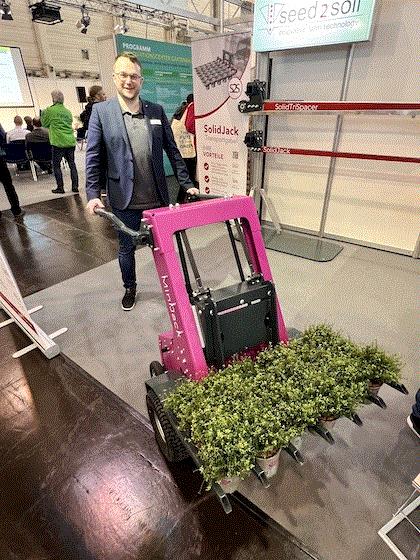
An Australian grower turned me on to the Mini Jack, a battery powered plant fork from Seed2Soil. Don’t be fooled by these narrow forks; they were just for the show. The real forks are about 6 ft. wide, with 330 lbs. capacity, to move plenty of plants. Another model coming will lift the plants more than 3 ft. high so you can put them on or take them off a buffer belt. Battery life is 10 hours; they recharge in four. Cost is about $7,500. Dennis Pülscher is showing how easy it is to operate.
Felco
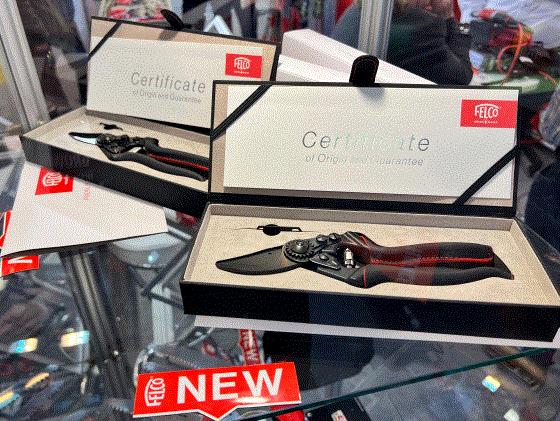
Some folks love their Felcos so much they get tattoos of the brand. They are the likely customer for these “Premium Special Edition” Felcos, offered in a black chrome/black anodozed finish with fine leather grips with red stitching, and nestled in a handsome presentation case. They come in No. 6 and No. 8 models and retail for a reasonable $250. Also from Felco, four new folding pruning saws, three new long-handled loppers (70, 80 and 90 cm) and their first hedge trimmers.

The color and texture trends
After studying the many pottery and container displays, I determined that:
- Black, white and gray remain timeless
- Various shades of green, from light to dark but all subtle (no lime, in other words) seemed to be the dominant color (although I saw a fair bit of pink)
- Metallic finishes, especially matte ones, are popular
- Textures—ridges, bumps, facets, swirls, etc.—remain popular
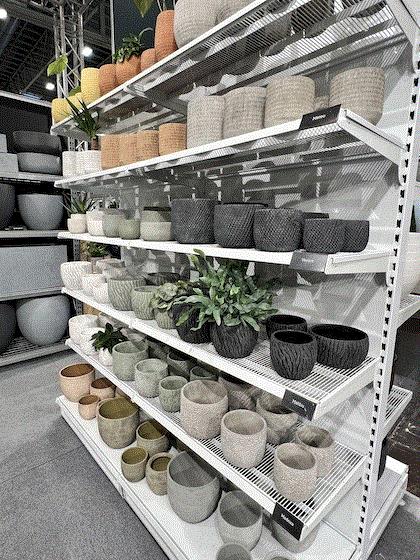
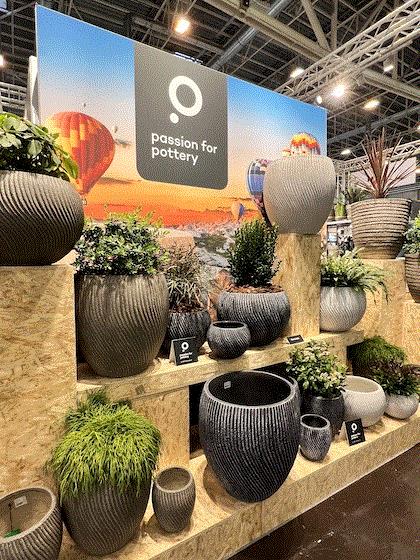
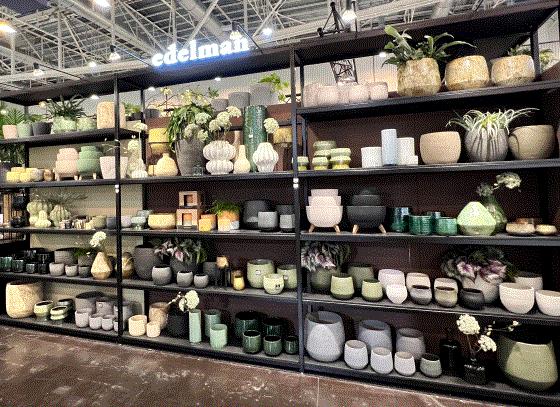
Florals
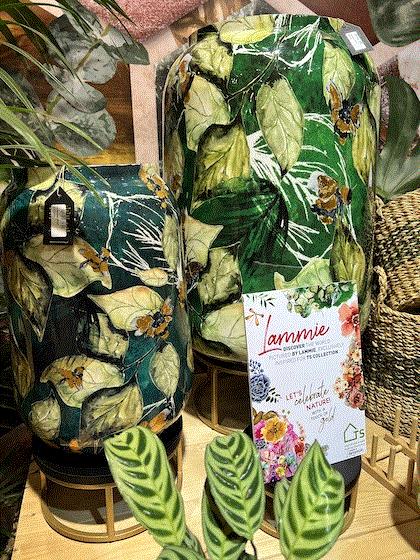
I’m a sucker for floral patterns (you should see my collection of Stance socks), so I appreciated these pretty patterns from Dutch designer Lammie at pot company Ter Steege. They offer six designs in a couple of different shapes and sizes.
The International Grower of the Year is …
... Brookdale Treeland Nurseries of Canada!
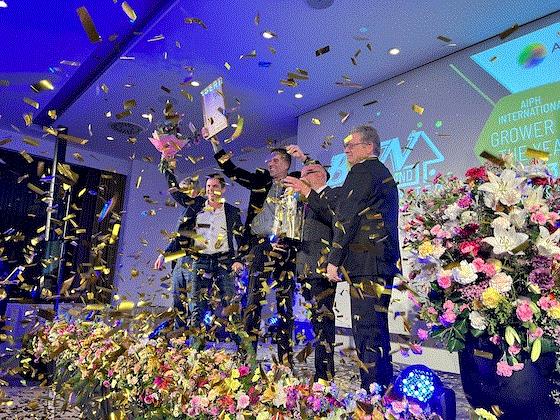
Steven van Schilfgaarde, CEO of Royal FloraHolland (the big Dutch flower auction), and I were on the stage to announce the name and present BTN with the coveted Gold Rose award at the AIPH International Grower of the Year (IGOTY) Awards Ceremony on Tuesday night of IPM.
BTN is one of the largest and most respected growers of garden plants in Canada. They service garden retailers, landscape contractors, municipalities and golf courses throughout Canada and the United States. With four farms in Ontario and one in British Columbia, BTN has a land base of more than 800 acres.
Founded in 2009, the IGOTY Awards recognize best practice in horticulture by the top ornamental production nurseries from around the globe, celebrating the expertise and energy they give to horticulture.
Jeff Olsen, President and CEO of BTN, commented: “We feel amazing, so blessed, to be honored with these awards. It means so much to me personally and our whole team back in Canada. We’re so excited to tell them the news.”
In addition to the Gold Rose Award, BTN was also awarded gold in the Finished Plants & Trees category and bronze in the Sustainability category.
Other awards I helped present that night include:
Young International Grower of the Year
Eliot Barden, Production and Education Manager for Majestic Trees, UK
Young Plants
Gold: Morel Diffusion, France
Silver: SB Talee de Colombia SAS, Colombia
Bronze: Xiamen Ican Seed Co., Ltd., China
Finished Plants & Trees
Gold: Brookdale Treeland Nurseries Ltd, Canada
Silver: Giorgio Tesi Group, Italy
Bronze: Fructoplant SP. Z O.O., Poland
Cut Flowers & Bulbs
Gold: Royal Base Corporation, Chinese Taipei
Silver: Zhejiang Toyoshima Co., LTD., China
Bronze: Zentoo, the Netherlands
Sustainability
Gold: Allensmore Nurseries, UK
Silver: Xiamen Ican Seed Co., Ltd., China
Bronze: Brookdale Treeland Nurseries Ltd, Canada
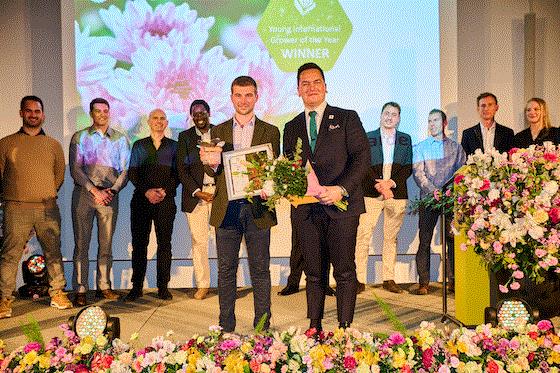
Young IGOTY winner Eliot Barden with Leonardo Capitanio, president of AIPH.

Finally I …
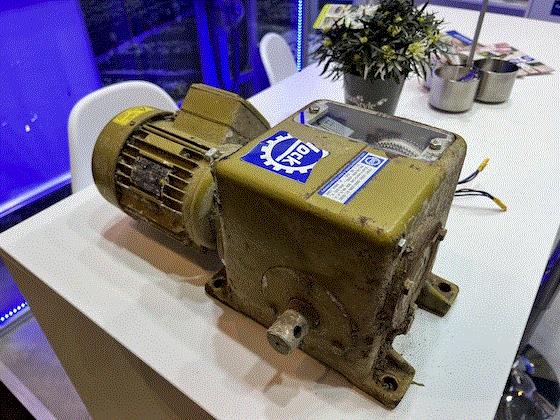
I appreciated what Lock Drives was doing with this interesting display—they are tapping into the “relic’d” trend that is seen in high-end guitars, in which you take a brand new instrument and make it look vintage and beat up, and charge more for it. Hey, if Fender can do it to a Stratocaster, why can’t Lock do it to a drive? (Okay, I’m kidding; this is a 25-year-old unit from a hog farm, still in muddy-but-working order. Their newest offering isn’t hardware, it’s software, to control and integrate all your greenhouse mechanical systems).
Finally II …
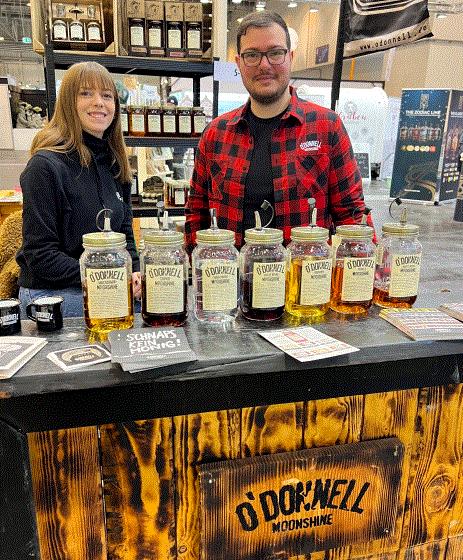
Most often, I look for European trends to bring state-side. But one German who traveled the U.S. some years back picked up one of our trends and brought it home: Moonshine. Complete in mason jar. Not the sort of refreshment I expected to find at IPM Essen, but I can testify that the Toffee Moonshine was fantastic! Mark and Digger would be proud.
Feel free to email me at beytes@growertalks.com if you have ideas, comments or questions.
See you next time,

Chris Beytes
Editor
GrowerTalks and Green Profit
This e-mail received by 26,259 loyal readers!
Thanks to my loyal sponsors, who help me reach the 26,258 readers of Acres Online in more than 60 countries. Want to be one of them (a sponsor, that is)? Give Kim Brown a shout and she will tell you about our many advertising opportunities.